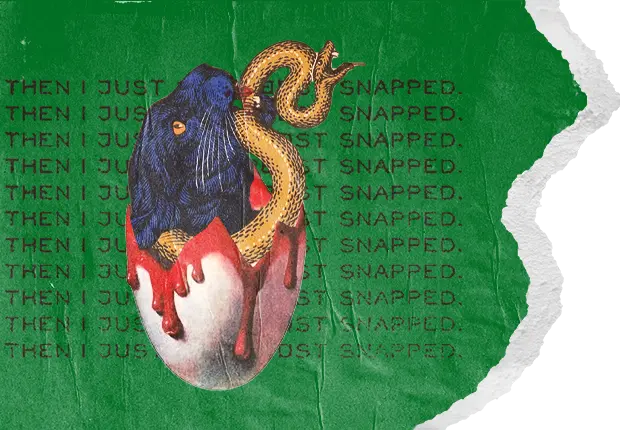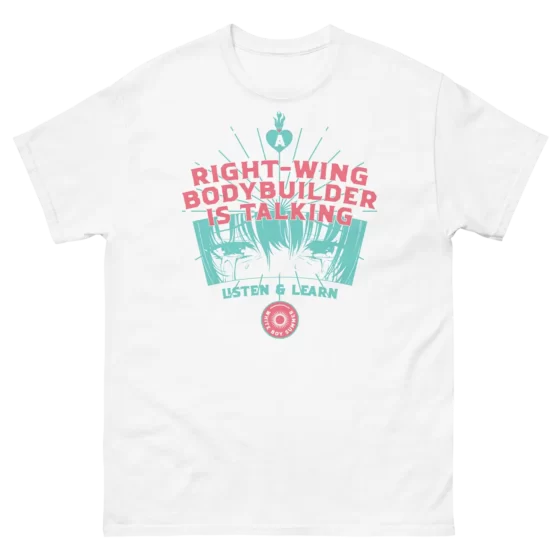The Symbol Manipulators and the World Sustainers
The world sustainers are the men who build and maintain the infrastructure of our civilization. Without the world sustainers, there is nothing. No power plants or electricity, no roads or airports, no cars or boats or trains, no food and no shelter.
The symbol manipulators, by contrast, work with abstractions. For them reality is mediated by complex networks of symbols: numbers, words, ideas. When tethered to reality, the manipulation of these abstractions increases prosperity, aids peace, and expands knowledge. Indeed, in the history of the West, abstractions like money and prices did allocate capital to its highest and best use; laws did facilitate mutually beneficial and voluntary exchange; theories did aid comprehension.
The growth of the West is largely a story of the proper balance between the symbol manipulators and the world sustainers: each contributing their part, while respecting the contributions of the other. Harmony was the rule. Symbol manipulators contrived ever better ideas to organize the efforts of the world sustainers, while the latter tested those ideas in the crucible of reality, providing feedback to the symbol manipulators. Feedback fostered an iterative process by which ideas were improved and prosperity grew. Together, they built the West out of the raw materials of the Earth.
Today, however, there is disharmony. The symbol manipulators have lost touch with reality, confusing their abstractions for the real thing. As a result, they have little idea how anything works and ignore all feedback. At the same time, they notice the existence of the world sustainers, if at all, only in insults like “bitter clingers,” “deplorables,” and “flyover country.” They make asses of themselves by saying things like “I could teach anybody … to be a farmer. … You dig a hole, you put a seed in, you put dirt on top, add water, up comes the corn,” as New York City Mayor Mike Bloomberg said in 2016.
The fate of our civilization requires that we rectify this imbalance. There is only one way to do so: To rear children the right way in the right places.
Ways and Places
We have some land in Tennessee. Roughly five acres. It borders a lake. To say it is bucolic would be a gross understatement. On some days in May, when the azure skies are dotted with occasional wisps of cloud, when the temperature hovers in the mid seventies, and a warm breeze lifts off the water, it borders on the sublime. On fine evenings, when the sun moves below the distant western ridge, lake and sky converge in the amber horizon. Without the vestibular system to distinguish them, you might not tell the difference.
The setting is rural and relatively isolated. To the north, we are abutted by hundreds of acres of forested public land rarely visited by anybody but our family. At night, brilliant stars beckon from eternity. Most mornings we wake to a fresh blanket of the fog that gives the Smokey Mountains their name. It burns off quickly. Wildlife abounds. Deer, bald eagles, blue herons, cranes, turkey, coyotes, skunks, racoons, turtles, snakes, wide varieties of fish, and innumerable migratory birds are abundant. We’ve even seen black bears.
Though the lake is manmade, our land feels timeless, much like Appalachia may have felt one hundred, one thousand, or even ten thousand years ago. There are tombstones we dare not disturb.
But beauty is only one reason we purchased this slice of the eternal. It is also an ideal setting for the rearing of children. My wife and I have three. For them, the setting provides the gift of total immersion in nature. The land and water provide ample opportunity to sharpen the physical and mental acuity of their developing minds.
Swimming, jumping, wrestling, kayaking, fishing, shooting, archery, hiking, camping, and fort-building are daily occurrences, as are thinking and reflecting, learning and growing. Becoming. For our children, exploration of mind and body is the defining ethos.
Skills are learned, abilities refined, fear overcome, judgment improved, and risk-taking calibrated. As a result, they are more courageous, stronger, and smarter than their typical peers. Digital screens are rare. Analog reality reigns.
My wife and I hold in mind an idea of the type of adults we want our children to become. That idea is the opposite of the type of adult birthed by the era of wayward symbol manipulators who comprise the most irresponsible generation in the history of humanity. I spent decades among that type. They are weak and self-absorbed and know very little about reality.
My children will not be them if I can help it. I hope they, and others of their generation, will become the type of adults who reestablish the harmony between the world sustainers and the symbol manipulators. The fate of the West depends on it.
The Symbol Manipulators
The symbol manipulators can do nothing except on the backs of the world sustainers: they cannot create or thrive or even survive. Despite the natural priority of the world sustainers and self-evident dependence of the symbol manipulators, the latter now assume they are the essential class. This assumption is so deep-seated that it rises to hubris.
It wasn’t always this way. Before the material abundance of modernity, the symbol manipulators understood their connection to the world sustainers. But with material abundance that connection was severed. Profound ideas hatched in the minds of the political, legal, and scientific geniuses (i.e., symbol manipulators) of an earlier era created the framework in which the world sustainers brought forth today’s incredible prosperity. Ironically, that prosperity served to immunize the next generation of symbol manipulators from the consequences of their bad ideas. Temporarily, anyway. The symbol manipulators were victims of their own success.
As such, today’s symbol manipulators never learned that abstractions have meaning only when tethered to underlying realities like land, resources, and energy. They have spent their entire lives among the symbols. For them, the symbols are “real,” while the things those symbols represent are far from mind or, worse, completely unknown.
By analogy, imagine a fantastical setting where a child is born and raised entirely upon an airplane high in flight. The plane never lands. The child is introduced to the gauges and dials in the cockpit, and learns to pay close attention to the altimeter and airspeed indicator. By adulthood, he is an expert in interpreting them. He can predict how a change in one will, with high probability, effect a change in the other. He devises theorems for these things. For example, he may observe an increase in the numerals that represent airspeed and dutifully predict an increase in the numbers that represent altitude. He thinks he understands. He is, after all, an expert symbol manipulator.
Imagine further that one day the throttle on the airplane gets stuck. The throttle, the imaginary aeronaut has learned, is the thing one moves forward in order to increase the numbers on the airspeed indicator which, in turn, will increase the numbers on the altimeter. Now that the throttle is stuck, he has no means to increase the numbers on the plane’s altimeter. Faced with the present difficulty, it dawns on him that he can break the glass on the altimeter and manually alter the dials so as to increase the plane’s altitude.
To a world sustainer, this is preposterous. But to our hypothetical aeronaut it is perfectly logical. He has no lived experienced with speed or altitude. He has never seen, felt, or heard these things. Indeed, he has only vague ideas about what the airplane is actually doing (flying), its mechanical operations, or its purpose. His entire world is mediated by numbers on gauges. That is, by symbols. For him, the symbols are the real thing. There is nothing else.
In reality, an altimeter is an incredibly powerful symbolic tool, but only when tethered to an understanding of the thing it represents. All measuring devices are like this. The interpretation of their symbols can add value only where it already exists and where the symbol manipulators appreciate that fact. In other words, the world sustainers come first. When that natural priority is lost (or never learned in the first place), the symbol manipulators go haywire.
The altimeter hypothetical illustrates the plight of the modern symbol manipulators. When tethered to reality, their ideas were subject to constant feedback. Feedback forced improvement and calibration. The ideas remained useful. But once severed from reality, their ideas became increasingly absurd, eventually losing all connection to experience.
Symbol manipulators divorced from reality gave us the Great Society and its decades of disaster for public education and public housing. They gave us four waves of feminism and the consequent destruction of the family and women’s mental health. They harnessed the civil rights laws to violate our civil rights. They destroyed our legal institutions in the name of the law. They destroyed our constitutional republic in the service of “our democracy.” They endlessly calculated GDP because, for them, GDP is wealth, even though, as Charles Haywood has observed, it is merely a measuring stick that measures nothing at all. And they gave us armies of well-credentialed but incompetent public servants. There are endless examples.
As the social and political power of the symbol manipulators grew, they exempted their ideas from scrutiny. No feedback was permitted. As a result, their ideas ossified and began to destroy America from within. They did so without interruption for more than six decades.
Today, most symbol manipulators have no idea of the natural priority of the world sustainers and the former’s dependence upon the latter for feedback. Like our imaginary aeronaut, they were raised entirely among the symbols. And so they have gone haywire. Their theories have virtually no connection to the concrete and almost no explanatory power. Yet they worship their abstractions like idols, trusting their calculations more than their own senses.
Before my wife and I moved to Tennessee nine years ago, we spent our entire lives in blue places among symbol manipulators whose abstractions were detached from reality. Still, we were always a bit out of sorts in those places. And with the birth of our three children, we realized that we had to understand and appreciate the world sustainers in order to better educate our children to their task: restoring the harmony between symbol manipulators and world sustainers.
Thus, I have been diligent in my efforts to gain real knowledge and real skill. The process has been both painful and rewarding. Painful in that much of what I had “learned” among the symbol manipulators had to be discarded because it is false. Rewarding in that I have replaced that nonsense with the truth. I did this so that I could better educate my children. But, commensurate with the themes in this essay, I could not understand the world sustainers merely by reading about them. And so, I tried my hand at improving our small part of concrete reality. I tried my hand at world-sustaining.
































